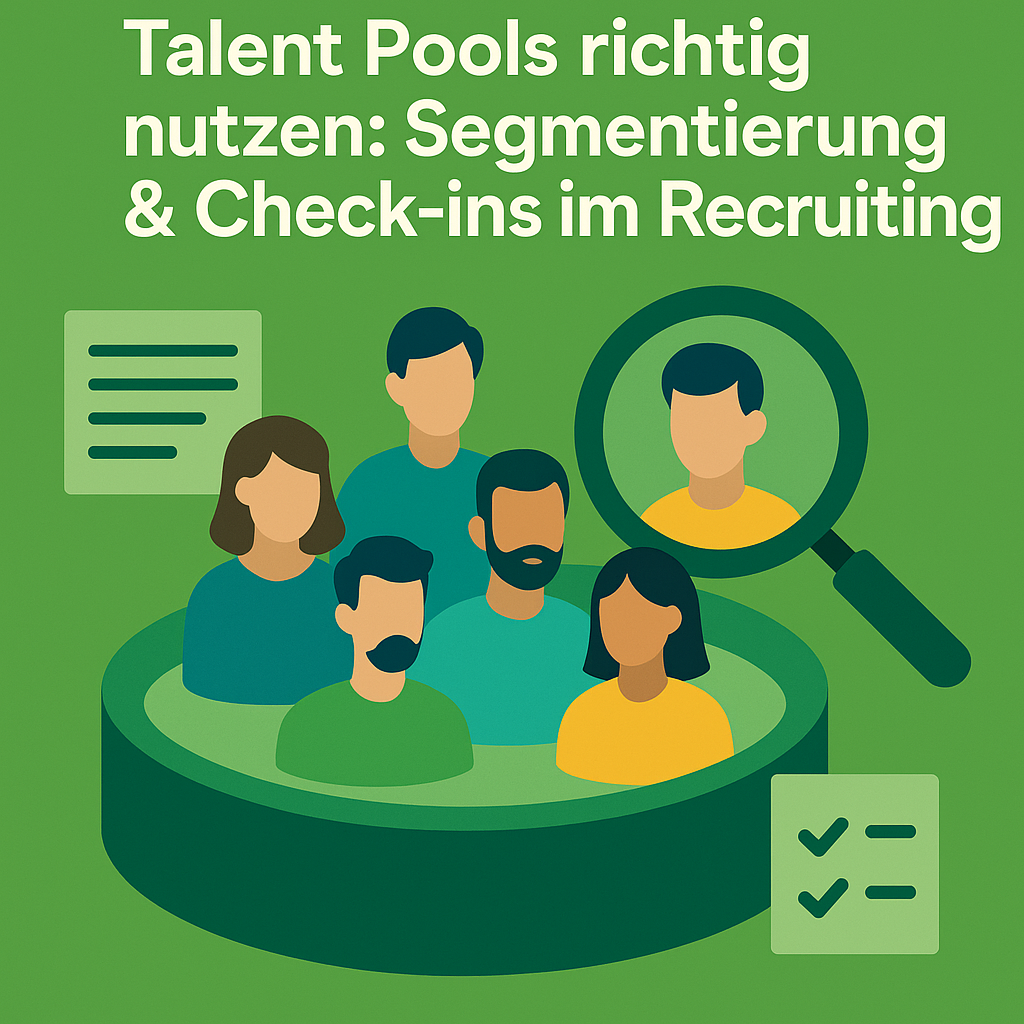1. why talent pools are often useless - even though they are full
Almost every recruitment consultancy or internal talent acquisition organisation talks about a "talent pool". In reality, this often means nothing more than a collection of contacts from previous interviews, old applications or network contacts - usually unsorted and outdated. Typical problems due to non-existent talent pool segmentation:
-
The profiles are not up-to-date or incomplete
-
There is no information on the willingness to change or the current tech stack
-
There is no system for regular, structured contact
The result: as soon as a new vacancy arises, recruiting ignores the supposedly existing talent pool - because nobody knows what it is good for. The search starts again from scratch.
A talent pool without structure is like a CRM without a funnel - potentially valuable, but operationally useless.
2. segmentation: how to turn chaos into a relevant pipeline
A pool can only be used strategically if it is segmented. Segmentation means that candidates are grouped according to defined criteria in order to be able to work with them in a targeted and efficient manner.
These characteristics are particularly crucial in tech recruiting:
-
Tech stack & specialisatione.g. "AWS + Terraform" vs. "Azure + Bicep"
-
Availability & motivation to change: actively searching, latently open, bound
-
Response behaviour: reactive, fast, hesitant or unavailable
-
Market attractivenessNiche expertise, seniority, former mandates
A structured pool makes it possible to activate the best candidates for a specific role with just a few clicks - instead of blindly writing to them.
If you don't segment, you don't have a pool - you have an address book.
3. check-ins: How to stay in the memory before someone is willing to change
Top candidates do not apply. They switch when the right moment comes. And whether you are contacted first depends on whether you are present - without being annoying.
Structured check-ins are the key. They follow a clear principle:
-
ScheduledEvery 90 to 180 days, depending on the segment
-
Contextualisede.g. reference to new Kubernetes projects, market trends, salary benchmarks
-
Channel diversitysometimes as a message, sometimes as an invitation or mini-update
-
Tracking-basedWhoever clicks gets a follow-up. Those who don't, stay silent.
Professional tools offer functions for reminders, automation and response analyses.
A check-in is not spam - but the prerequisite for dialogue-oriented talent nurturing.
4. automation + human touch: how to maintain the pool with a system
No recruiter has time to manage 400 contacts manually. The solution does not lie in the decision for or against automation - but in a combination of both.
In concrete terms, this means
-
Automated campaignsfor relevant segments with high volumes
-
Trigger-based follow-upe.g. after GitHub activity, conference participation or job change
-
Personal reactivationfor top talents where timing and trust are key
-
Reminder systemsfor targeted contact maintenance according to fixed cycles
This creates a scalable process that remains credible at the same time. Automation saves time - the human touch ensures relevance and trust.
Recruiting logic: If you don't systematise talent management, you lose performance. If you don't personalise it, you lose impact.
5. what indivHR different - and why our pool is alive
At indivHR, the talent pool is not just a buzzword - it is a living infrastructure. Every contact undergoes a semantic profile analysis in which the tech context, project logic and motives for changing jobs are systematically recorded.
Our structure is based on:
-
Semantic talent pool segmentation instead of keyword tagging
-
Trigger-based outreach - aligned with market movements, season, candidate behaviour
-
Relevant check-ins - with content that really interests you (e.g. benchmarks, project insights, event invitations)
-
Automated reactivation with personalised post-processing
The result: we don't re-source when a mandate starts - we specifically activate the right contacts. This not only shortens the time to interview - but also massively increases the accuracy of fit.
Our claim: A talent pool is not a warehouse. It is a strategic system with a pulse.
A functioning talent pool needs more than a good ATS. It needs:
-
Segmentation according to real recruiting criteria
-
Structured, relevant check-ins
-
Intelligent automation with a personal touch





